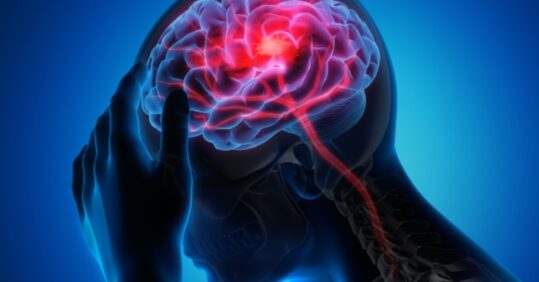Mythbuster: ‘I don’t need to go to hospital for a mini stroke’

The reality: Yes, all suspected mini stroke or TIA (Transient Ischaemic Attack) cases are classed as a medical emergency and should be seen by the specialist stroke team at a hospital within 24hours.
Mini stroke or TIA is defined as a transient episode of neurological dysfunction caused by focal brain, spinal cord or retinal ischaemia without evidence of acute infarction.1 TIA has the same clinical presentation as stroke, however, symptoms fully resolve within 24 hours.2 Depending on which part of the brain is affected symptoms can vary but the most common include arm and/or leg weakness or sensory loss, speech difficulties, loss of vision and facial droop.
Related Article: Be alert to pancreatitis in patients using GLP-1 weight-loss drugs
Each year 100,000 people will have a stroke and it is estimated that 12-30% of those patients will have experienced a TIA prior to a stroke and 25% would have had a TIA in the 24 hours prior to stroke. 3,4 Stroke is still the greatest cause of disability in the UK and costs the NHS in England nearly £3 billion a year.5 It is crucial for staff in the primary care setting to be able to recognise TIA and act accordingly.
Despite various public campaigns and the successful FAST campaign a large proportion of TIA patients still seek GP practice appointments rather than ring 999, particularly those whose symptoms resolve quickly within minutes. This means primary care teams have a major role in identifying TIA and rapid referrals to TIA clinic.6 Early assessment and management of TIA is vital as it greatly reduces risk of stroke. Therefore, primary care teams should also prescribe aspirin 300mg unless contraindicated to start immediately and advise all suspected TIA patients not to drive until seen in the TIA clinic. A clear explanation should be given to patients so that they can appreciate the importance of referral to clinic but reassurance should be provided as well.
TIA clinic is a specialist clinic that has rapid access to stroke specialist consultants who can provide diagnosis, investigations and treatment for TIA and minor stroke in one place. Most trusts now offer 7-day TIA services. Patients can be referred directly into clinic by primary care healthcare professionals. There would be no reason to send them to A&E unless there is no local pathway providing TIA assessment within 24hrs. Some patients can be more complex and then a discussion with local stroke services prior to referral if often beneficial. For example, patients who have had more than one TIA in a short time scale or have been identified as new AF (Atrial Fibrillation).
Historically national guidelines recommended risk assessment tools such as ABCD2 be used to triage TIA patients as high or low risk, however, new NICE guidance published in 2019 recommends these tools are no longer used as they are not accurate, causing potential harm to patients. Instead all patients should be deemed at risk and be referred to be seen within 24 hours. As this is a relatively new change to practice not all trusts have changed the referral process yet, so it is important to check with your local trust on their current protocol.
Related Article: Women less likely than men to be treated for heart condition
In summary TIA is a medical emergency and should be recognised and treated promptly to reduce the risk of stroke. Primary care teams play a vital role in TIA management and reducing future stroke.
What can you do to help your patients?
Related Article: Increased risk of heart disease with adult-onset type 1 diabetes
- Ensure their symptoms are identified quickly
- Refer to a specialist immediately so they can be seen within 24 hours and receive the right scans and tests to get a fast diagnosis
- Offer aspirin straightaway after a TIA to help prevent a stroke
- Explain what a TIA is and why you are referring them for treatment
- Advise them not to drive.
References:
- WHO. Health Topics- stroke, cerebrovascular accident. 2016. Available www.who.int/topics/cerebrovascular_accident/en/
- National Institute for Health and Clinical Excellence. Stroke and transient ischemic attack in over 16s: diagnosis and initial management. [Online].; 2019 [cited 2020 January 08. Available from: www.nice.org.uk/guidance/ng128
- Rothwell PM, Warlow CP. Timing of TIAs preceding stroke: time window for prevention is very short. Neurology. 2005; 8(64): p. 817-820.
- Hackam DG, Kapral MK, Wang JT, et al. Most stroke patients do not get a warning: a population-based cohort study. Neurology. 2009; 73: p. 1074-1076.
- Hackam DG, Kapral MK, Wang JT, et al. Most stroke patients do not get a warning: a population-based cohort study. Neurology. 2009; 73: p. 1074-1076.
- Stroke Association. State of the Nation: Stroke Statistics. www.stroke.org.uk.
- Dutta D. Rapid treatment after TIA reduces risk and saves lives. Guidelines in Practice. www.guidelinesinpractice.co.uk.

See how our symptom tool can help you make better sense of patient presentations
Click here to search a symptom




